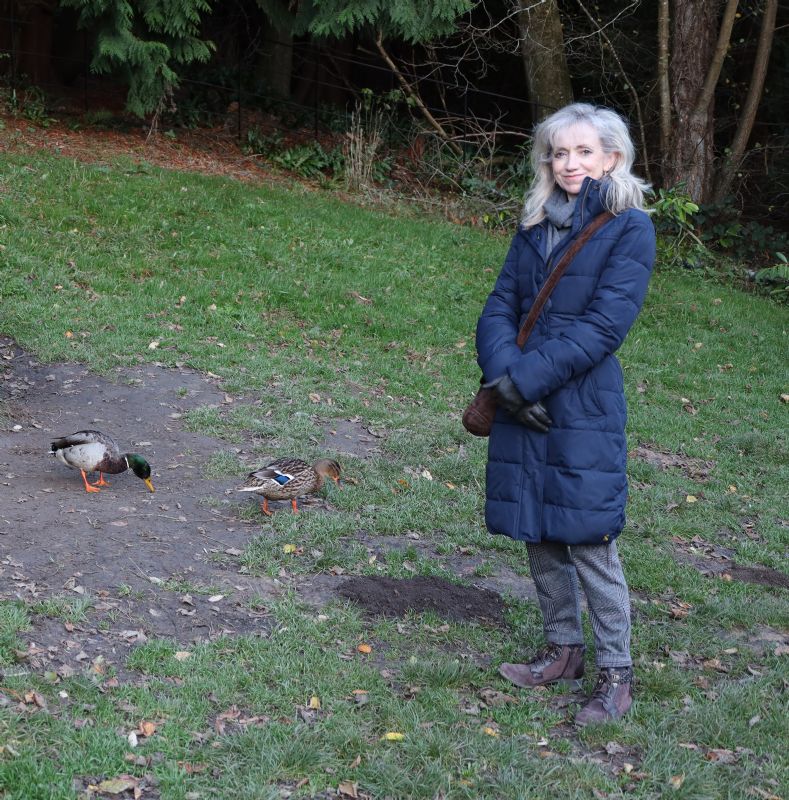- Home
- News, Articles & Reviews
We are hiring! Please click here to join our growing magazine delivery team in Gloucestershire!

The perfect padded coat
All Areas > Health & Beauty > Vintage & Sustainable Fashion
Author: Lynda Rowland, Posted: Thursday, 7th January 2021, 11:10
Winter is upon us. We have had some very cold days already and we can probably expect plenty more over the next couple of months. To enjoy our daily walks and outdoor chats, the warmest outer layer would seem to be the padded coat or puffer jacket.
Whatever thickness or quality of wool, cashmere or tweed our mothers’ and grandmothers’ winter coats were made from, they probably didn’t achieve the level of warmth that a ‘duvet’ coat can provide. In fact, that’s why, before ethical practices were so high on our radar, many women would have had at least one fur coat in their wardrobe.
Nowadays, although most people would understand that residents of countries like Russia, North America and Canada, can sometimes justify wearing fur, for most of us it seems unnecessary when balanced against the animal cruelty that is often involved in its production.
So, we are left with the option of layering up under our wool and cashmere coats or opting for one of the many padded, down coats that now predominate in the outerwear ranges of most stores.
Black, navy or bright and cheery red or green, they have come to represent the winter season with their cosy comfort and thick, quilt-like voluptuousness.
However, even though animal welfare standards have improved, if you really want to dress ethically, there are still some key points to consider when choosing a winter warmer.
Animal activists still disagree with methods of sourcing down for garments
Since the day when the padded coat transitioned from outdoor practical clothing to fashion garment, animal welfare activists have continued to believe the process of sourcing the down for these garments is a step too far. The only method of gathering down that does not involve some intrusion on the birds themselves, is collecting from nests, which of course is a hugely impractical and therefore pricey exercise.
During the early days of production, some birds were cruelly plucked alive at the same time as being forcibly fattened up for the production of pâté de foie gras. The horrific inhumanity of this has subsequently been recognised and over the last ten years standards have improved greatly.
Most clothing manufacturers now profess to use feathers and down which are by-products of the food industry and claim that, if these materials were not utilised for garments, they would merely constitute more wastage, which is unsustainable in itself. Furthermore, they believe that feather and down fillings are unrivalled in their warmth.
Animal welfare groups such as PETA would rather not see any animal products used in this way and recommend the use of synthetic padding in coats, which they say, is equally warm and also allergen free, since it is not prone to dust or mould which natural products can be.
The British clothing company Landsend.co.uk have a wide range of colourful quilted coats at reasonable prices, that are lined with an innovative fibre called Thermoplume, which emulates natural feathers and down in its structure and warmth.
Another company worth looking at is Arket.com, a Swedish brand which specialises in recycled and ethical materials. Slightly higher up the price scale and very stylish, their coats are either filled with recycled feathers and down, or a lightweight padding made from recycled polyester. Other interesting fabrics on offer throughout their range include coats and jackets made from recycled plastic bottles.
In order to feel comfortable about the source of the padding in your quilted coat and guilt-free about wearing it, try to avoid the cheapest and therefore less ethical fast fashion outlets.
Most companies now have some reference to sustainability on their websites and the more conscientious will also have an ethical pledge. Try to make an informed choice before buying.
This type of coat does not really go out of fashion year on year, so take a little time to learn about the production of your new coat this winter and hopefully it will serve you well for many seasons to come.Copyright © 2025 The Local Answer Limited.
Unauthorized use and/or duplication of this material without express and written permission from this site's author and/or owner is strictly prohibited. Excerpts and links may be used, provided that full and clear credit is given to The Local Answer Limited and thelocalanswer.co.uk with appropriate and specific direction to the original content.More articles you may be interested in...


© 2025 The Local Answer Limited - Registered in England and Wales - Company No. 06929408
Unit H, Churchill Industrial Estate, Churchill Road, Leckhampton, Cheltenham, GL53 7EG - VAT Registration No. 975613000You are leaving the TLA website...
You are now leaving the TLA website and are going to a website that is not operated by us. The Local Answer are not responsible for the content or availability of linked sites, and cannot accept liability if the linked site has been compromised and contains unsuitable images or other content. If you wish to proceed, please click the "Continue" button below:




